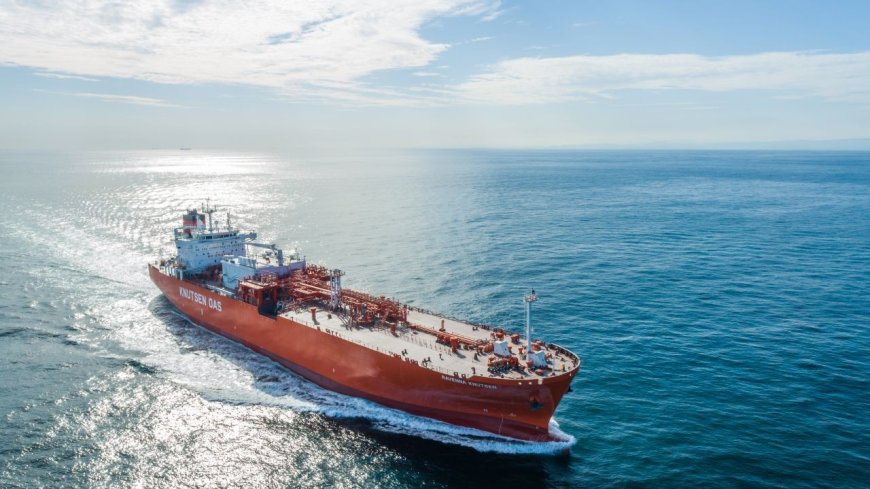Small-Scale LNG Market Statistics 2024-2032: Size, Share, Trends and Research Report
The small-scale LNG market has been experiencing continuous growth. The increasing usage of small-scale LNG in transportation and power generation represents one of the primary drivers resulting in the increasing sales of small-scale LNG.

IMARC Group's report titled "Small-Scale LNG Market Report by Terminal Type (Liquefaction Terminal, Regasification Terminal), Mode of Supply (Truck, Trans-Shipment and Bunkering, Pipeline and Rail, and Others), Storage Tank Type (Pressurized, Atmospheric Tank, Floating Storage Unit (FSU)), Application (Electrical Power Generation, Industrial Feedstock, Transportation, and Others), and Region 2024-2032". The global small-scale LNG market size reached US$ 35.8 Billion in 2023. Looking forward, IMARC Group expects the market to reach US$ 64.8 Billion by 2032, exhibiting a growth rate (CAGR) of 6.6% during 2024-2032.
Factors Affecting the Growth of the Small-Scale LNG Industry:
- Regulatory and Environmental Policies:
The small-scale LNG sector is experiencing rapid expansion, fueled by a convergence of driving forces, including tightened eco-friendly laws and government incentives. As global governments strive to minimize carbon output, natural gas is emerging as a more appealing substitute for coal and oil, with LNG's reduced carbon impact gaining traction. The development of infrastructure, such as LNG hubs and supply chains, is also receiving a lift from supportive policies, further propelling market advancement. Moreover, the International Maritime Organization's rules on sulfur emissions have sparked a surge in demand for LNG as a maritime fuel, unlocking fresh opportunities for small-scale LNG in transportation, off-grid power generation, and industrial sectors.
- Technological Advancements and Cost Reduction:
Technological advancements have greatly benefited the small-scale LNG industry. Improvements in liquefaction and regasification techniques, the use of modular LNG plants, and floating storage units have led to reduced costs and quicker establishment of LNG facilities. These innovations are particularly advantageous for smaller projects that prioritize cost-efficiency. Enhancements in fuel tank design and refueling infrastructure are facilitating the use of LNG as a transportation fuel, especially in heavy-duty vehicles and ships. Furthermore, the incorporation of digital technologies such as IoT and blockchain is improving the efficiency and transparency of the supply chain. As a result, small-scale LNG projects that were previously limited by high expenses and technological barriers are now increasingly viable and competitive.
- Market Demand and Versatility of Application:
The small-scale LNG sector is thriving, driven by escalating demand and its ability to cater to diverse industries. This adaptable energy source meets the needs of a broad customer base, spanning industrial clients to rural communities lacking access to primary gas infrastructure. The demand for LNG in power generation is surging, particularly in remote or island locations with limited energy options. Furthermore, the transportation industry is increasingly turning to LNG as a fuel for heavy-duty vehicles, buses, and ships, attracted by its environmental benefits and cost savings, which in turn fuels market growth. The extensive range of applications is driving the small-scale LNG market forward, offering a flexible, economically viable, and environmentally friendly energy solution for various requirements. Additionally, the tailor-made nature of small-scale LNG projects enables bespoke approaches to satisfy specific regional or industry needs, thereby enhancing its market potential.
Leading Companies Operating in the Global Small-Scale LNG Industry:
- Dresser-Rand Group Inc. (Siemens)
- Engie SA
- Excelerate Energy. L. P.
- PJSC Gazprom
- General Electric (GE) Company
- Honeywell International Inc.
- IHI Corporation
- Linde Aktiengesellschaft
- Novatek
- Plum Energy LLC
- Royal Dutch Shell PLC
- Sofregaz SAS
- Wärtsilä Oyj Abp
For an in-depth analysis, you can refer sample copy of the report: https://www.imarcgroup.com/small-scale-lng-market/requestsample
Small-Scale LNG Market Report Segmentation:
By Terminal Type:
- Liquefaction Terminal
- Regasification Terminal
Liquefaction terminal dominates the market by terminal type due to the increasing need for converting natural gas to LNG for easier transportation and storage, particularly in regions with abundant natural gas resources.
By Mode of Supply:
- Truck
- Trans-Shipment and Bunkering
- Pipeline and Rail
- Others
Truck holds the largest market share as it offers flexible, cost-effective delivery of LNG to various end-users, especially in areas lacking extensive pipeline infrastructure.
By Storage Tank Type:
- Pressurized
- Atmospheric Tank
- Floating Storage Unit (FSU)
Atmospheric tank accounts for the majority of the market share owing to its cost-effectiveness and simplicity in design, making it suitable for a wide range of small-scale LNG storage applications.
By Application:
- Electrical Power Generation
- Industrial Feedstock
- Transportation
- Others
Transportation represents the leading application segment on account of the growing adoption of LNG as a cleaner fuel alternative for heavy-duty vehicles, ships, and buses due to stringent environmental regulations.
Market Breakup by Region:
- North America (United States, Canada)
- Asia Pacific (China, Japan, India, South Korea, Australia, Indonesia, Others)
- Europe (Germany, France, United Kingdom, Italy, Spain, Russia, Others)
- Latin America (Brazil, Mexico, Others)
- Middle East and Africa
Global Small-Scale LNG Market Trends:
The small-scale LNG market is experiencing rapid expansion due to the global shift energy sources. Governments and industries are placing greater importance on reducing carbon emissions, leading to the adoption of LNG as a preferred option over traditional fossil fuels. Industries like transportation and manufacturing are increasingly using LNG as a cleaner and greener alternative to diesel and coal. Advancements in liquefaction and regasification technologies are making LNG more affordable and available. Additionally, supportive government measures and growing investments in LNG infrastructure, especially in areas like Asia Pacific and Europe, are driving further growth in
Note: If you need specific information that is not currently within the scope of the report, we will provide it to you as a part of the customization.
About Us:
IMARC Group is a leading market research company that offers management strategy and market research worldwide. We partner with clients in all sectors and regions to identify their highest-value opportunities, address their most critical challenges, and transform their businesses.
IMARCs information products include major market, scientific, economic and technological developments for business leaders in pharmaceutical, industrial, and high technology organizations. Market forecasts and industry analysis for biotechnology, advanced materials, pharmaceuticals, food and beverage, travel and tourism, nanotechnology and novel processing methods are at the top of the companys expertise.
Our offerings include comprehensive market intelligence in the form of research reports, production cost reports, feasibility studies, and consulting services. Our team, which includes experienced researchers and analysts from various industries, is dedicated to providing high-quality data and insights to our clientele, ranging from small and medium businesses to Fortune 1000 corporations.
Contact Us:
IMARC Group
134 N 4th St. Brooklyn, NY 11249, USA
Email: sales@imarcgroup.com
Tel No:(D) +91 120 433 0800
United States: +1-631-791-1145
What's Your Reaction?
 Like
0
Like
0
 Dislike
0
Dislike
0
 Love
0
Love
0
 Funny
0
Funny
0
 Angry
0
Angry
0
 Sad
0
Sad
0
 Wow
0
Wow
0
























































